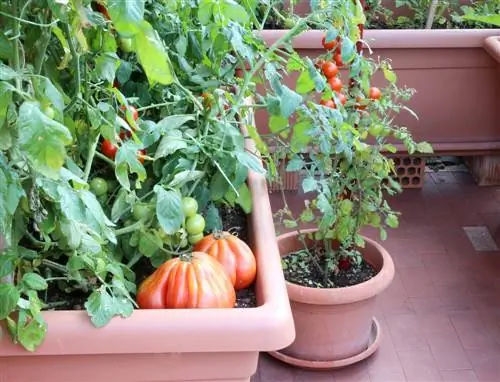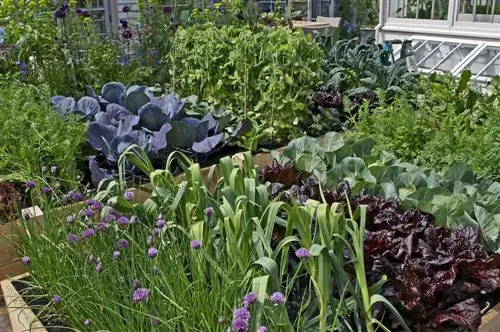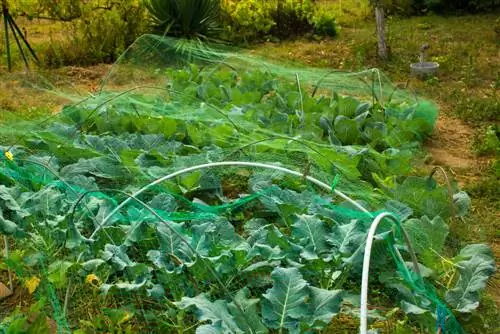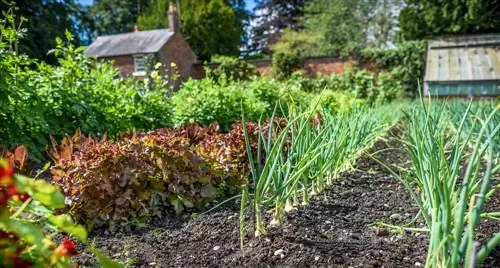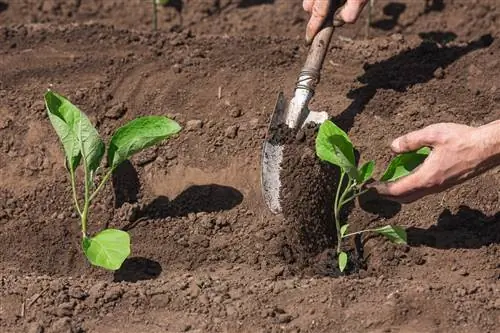- Author admin [email protected].
- Public 2023-12-16 16:46.
- Last modified 2025-06-01 06:02.
You don't have a garden or you don't have enough space for an additional vegetable patch? You can also grow delicious vegetables on the terrace and bring the special aroma of sun-drenched tomatoes, crunchy fresh radishes and incomparably aromatic salads straight into your kitchen.
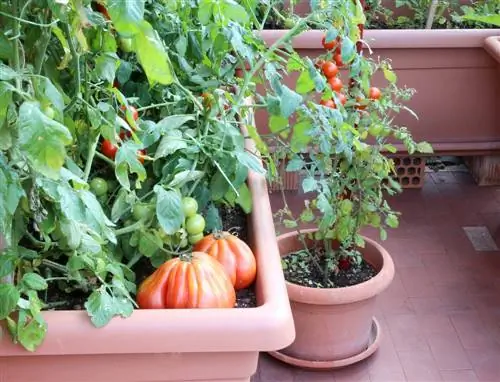
How can I create a vegetable patch on the terrace?
A vegetable bed on the terrace can be created using pots, raised beds, flower boxes or old sandboxes. Choose the right planter and fill it with soil or substrate. Tomatoes, radishes and herbs thrive on terraces and require regular fertilizer.
The vegetable garden in a pot
Flowering plants are classics on the terrace. Vegetables can also be grown just as easily in bowls, tubs and pots. The only requirement for this is that the size and depth of the planter is tailored to the needs of the vegetable plants:
- Shallow bowls are sufficient for cress. Fill this with soil and scatter the seeds.
- Carrots, radishes and garlic require deep containers in which the delicious tubers can develop well.
- Tomatoes prefer dark pots with sufficient volume. Like runner beans and cucumbers, they should be supported by a climbing aid.
Raised beds - perfect for the terrace
In garden shops you can get pre-assembled raised beds especially for the terrace. With a little bit of craftsmanship, you can of course make such a construction yourself and adapt it perfectly to the local conditions. When attractively planted, such a raised bed is a visual highlight that can steal the show from pure floral decorations.
Vegetables in the flower box
Due to the very limited amount of substrate, flower boxes are not suitable for all types of vegetables. Hanging strawberries or melon pears, for example, look wonderful and can cope very well with these conditions.
An old sandpit used as a vegetable patch
Your children have outgrown the sandpit on the terrace? Wonderful, because this can be easily converted into a vegetable patch:
- Drill some holes in the ground to allow excess water to drain away.
- Place some pottery shards over these.
- Fill in a thin drainage layer of expanded clay or gravel.
- The following is the substrate, preferably a mixture of topsoil and compost, possibly enriched with sand.
The converted sandpit is not only suitable for growing radishes, garlic or lettuce. Herbs also feel extremely comfortable here. These not only become an eye-catcher, but also provide insects with valuable food.
Tip
Since the amount of nutrient-storing soil in bowls and pots is limited, the vegetable plants on the terrace need regular fertilizer. Commercially available liquid fertilizer (€19.00 on Amazon), which is added to the irrigation water weekly, has proven to be effective.

